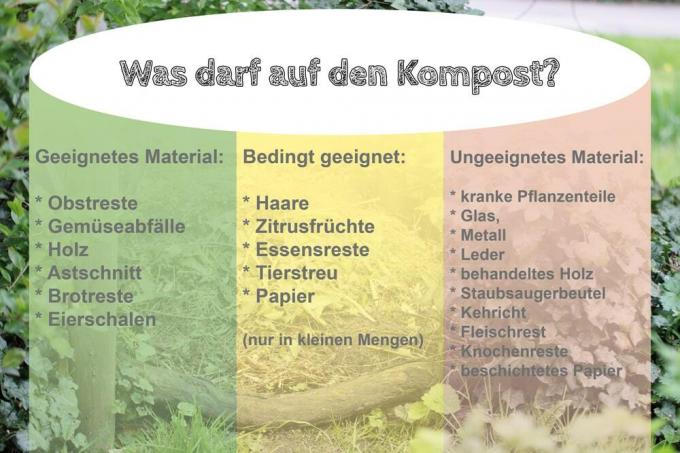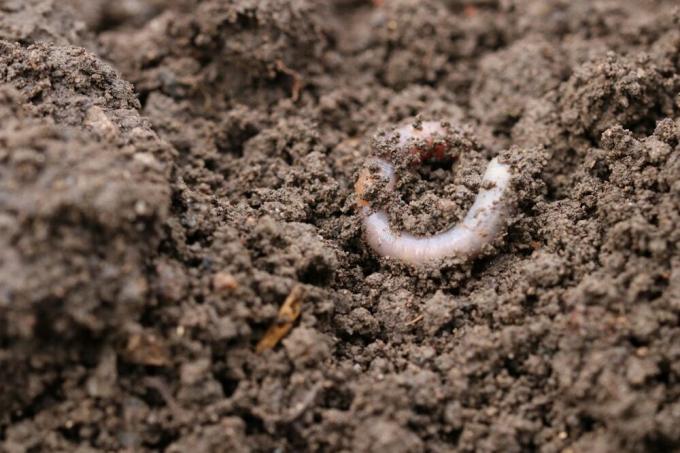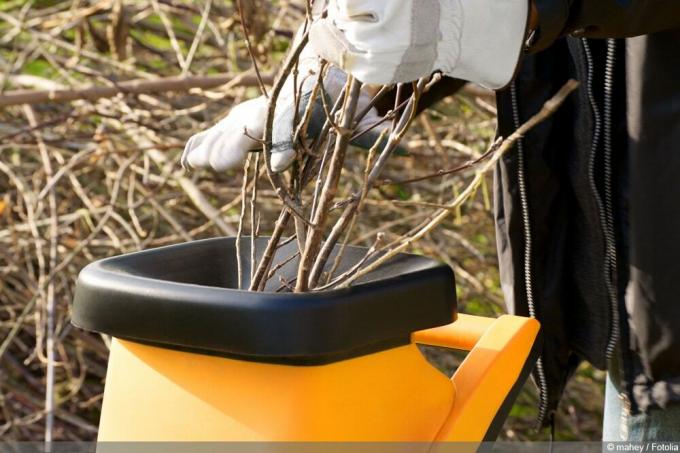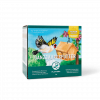

Table of contents
- layering
- garden waste
- No diseased plant parts
- leftovers
- Purchased plants
- animal litter
- Good mixture
- Material for compost acceleration
Making a good compost for the garden is almost a science in itself. Proper compost management ensures that the waste decomposes properly and becomes nutrient-rich soil. An important part of compost management is choosing the right compost material. What belongs in the compost and what doesn't can be found in a free PDF list that can be hung up next to the composting area.
layering
As a rule, everything that comes from the garden can go straight back into the compost. This applies above all to the weeds that are weeded out. But dead plant material is also ideal for compost. Above all, the mixture of fresh and dead material ensures a balanced compost and also promotes rapid decomposition.
The ideal layering looks like this:
- garden waste
- chopped branches
- garden soil
The three layers alternate evenly until the compost heap has reached the desired height. Finally, a thick layer of garden soil is given over it. This provides closure and prevents the compost from drying out. This would slow down composting. Once the compost pile is complete, no new material should be added to it.
garden waste
Gardening produces a lot of compostable material. However, not every material can be placed on it without hesitation. Weeded plants should have as little soil as possible on the roots. If branches are added to the compost heap, they should be broken up. This also applies to coarse material such as cabbage stalks. Smaller material composts faster and when the pile is opened, there is no need to laboriously sort out coarse plant parts.

Be careful when cutting the lawn. This should only be added to the compost bit by bit. If the turf layer is too thick, it will not compost, but ferment. While this does not harm the microorganisms, it is not the aim of composting. During fermentation, the material is primarily liquefied rather than turned into soil. Grass clippings should therefore only be placed on the compost heap in small quantities or slightly withered.
Tip:
Lawn clippings are very suitable for mulching and therefore do not necessarily have to go to the compost.
Leaves can also be problematic on the compost. In particular, leaves that are difficult to decompose, such as walnuts, should only be added to the compost in small quantities. However, some garden plants, like hydrangea, love compost from foliage. If there are many deciduous trees in the garden, it is a good idea to create a separate compost heap for the leaves to feed those plants that like acidic soil.
No diseased plant parts
Under no circumstances should parts of plants be placed on the compost that have to be removed due to pests or diseases. During composting, pests and pathogens or Mushrooms not destroyed. Through the compost they get back to the plants and can trigger a new infestation.
Such plant parts are sorted out and disposed of in the residual waste. This is burned, preventing it from spreading. Diseased parts of the plant should not be put in the organic waste either, and this too is composted and so pests and diseases may return to the garden via potting soil reached.
leftovers
Leftover food on the compost is a sensitive issue. They can attract unwanted visitors like rats. Therefore, when it comes to leftovers, it is not only important to differentiate which leftovers are involved, but also to throw them sparingly on the compost. Egg shells or bread can be composted without hesitation. The remains of the salad or cooked vegetables are also suitable for the compost. Noodles can also be composted to a limited extent. What does not belong on the compost, however, are meat or bone remains. These are guaranteed to attract rats, which then often even create their dwellings in the compost.
Purchased plants

Dried cut flowers, potted plants that died quickly, they often end up in the compost. They are not a problem as long as they are organic plants. Conventional cut flowers or potted plants are often contaminated with pesticides and should therefore be better disposed of.
animal litter
When it comes to animal litter, opinions differ as to whether it belongs in the compost. In principle, faeces, whether from animals or humans, have no place in the compost. However, small animal litter can be used to a limited extent. The following animal litter is compostable:
- underlying paper
- sawdust
- straw/hay
- wood chips
Animal litter in the form of granules does not belong on the compost heap. This is not biological material that composts quickly. In addition, these granules are often treated with chemicals to bind the odor. For health reasons, no faeces from dogs or cats should end up in the compost. Both animals can act as intermediate hosts for diseases, which in turn can be transmitted to humans.
Good mixture
Especially when it comes to material that should only go to the compost to a limited extent, it is important to mix it with harmless material. However, since suitable material is not always available or a certain material is only available at certain points, it is often not enough to create just a compost heap. This means that larger quantities of difficult materials can also be composted. Material such as egg shells or branches or Leaves can also be collected once beforehand and then mixed into the compost when needed. Above all, branches and leaves should be collected separately, because they ensure that the pile remains loose and that it is aerated.
Material for compost acceleration
So that the compost develops well or If the process is even accelerated, different materials can be mixed in. Yeast water with sugar can be used as a compost starter, for example. As a result, useful fungi are already getting into the compost material. Stone flour also helps with composting and later ensures a balanced ratio of minerals. The rock dust also binds unpleasant odours. Herbs can also have a positive effect on the quality of the compost. However, what many refer to as weeds provide an extra boost of nutrients when composted. Ideal herbs for the compost are:
- nettle
- Comfrey
- yarrow
- horsetail
The herbs are roughly chopped up and added to the compost in layers.

 Home editorial office
Home editorial office
Learn more about making compost

Dampen the earth properly: build your own earth damper | sterilize compost
Sterilizing soil is a common practice that more and more home gardeners are embracing. This allows soil and especially compost to gain optimal quality. The gardening expert explains how to do it correctly and how easy it is to build an earth damper yourself.

Build your own worm box: Instructions | DIY worm composter
Building a worm box yourself is quite easy, but has numerous advantages. In our instructions we show how the DIY worm composter can be made with simple means and in just a few steps.

Build your own composter 12 tips for rain barrels, pallets & garbage cans
A composter is ideal for the garden and balcony. But the numerous options represent a hurdle. Each variant has its advantages. But no matter whether you build your own composter or buy it: there are some aspects that you should consider.

Balcony worm composter: Create compost on the balcony
Gardening is now done in the smallest of spaces, so growing vegetables on the balcony is no longer out of the question. However, a prerequisite for a good harvest is high-quality soil, which can be produced even in a limited space using vermicompost.

Shredding garden waste and hedge trimmings: which shredder is suitable?
Gardening results in branch cuttings and green waste that can either be disposed of or reused. With a garden shredder, the greens can be processed into compost or mulch and made available for garden use. There are various variants to choose from, which can be adapted to the intended use.

Build a pass-through sieve yourself | Mesh size for compost, soil and sand
In a well-equipped home garden, a pass-through sieve removes unwanted components from compost, soil and sand. With a little manual skill and these instructions, you can easily build a stable garden sieve yourself. You can find out here which mesh size guarantees perfect results.



